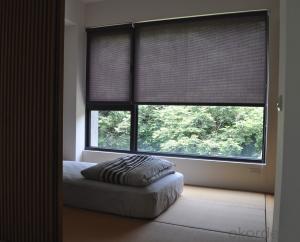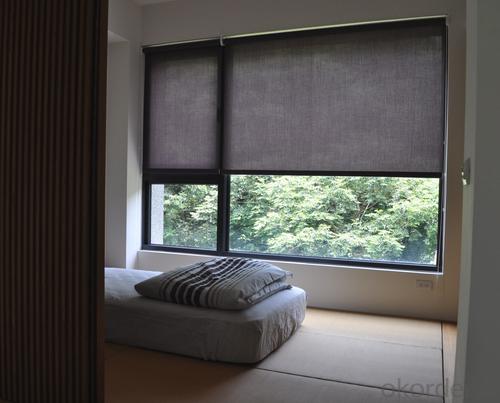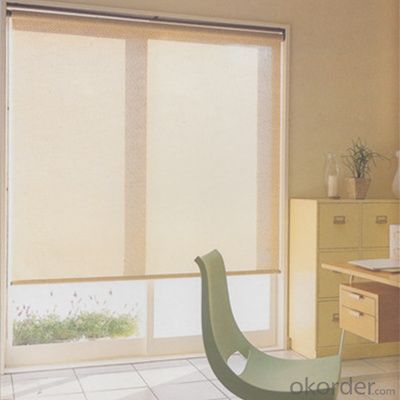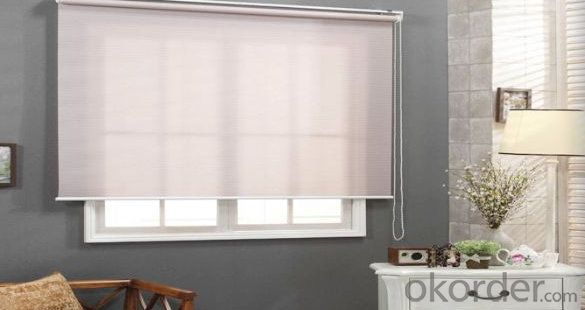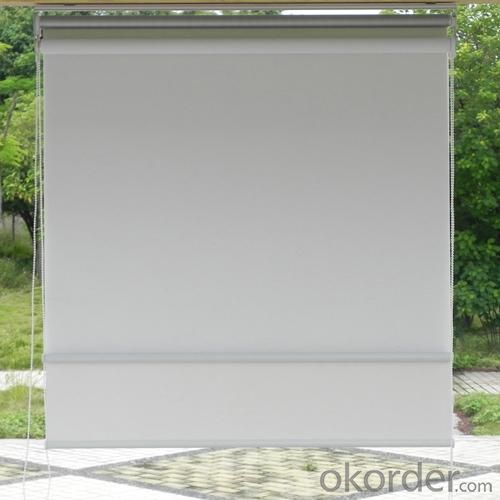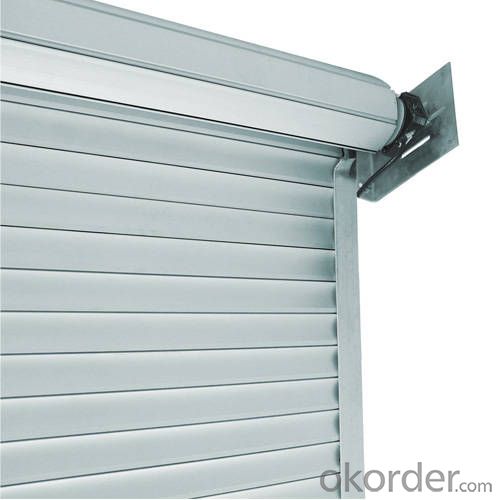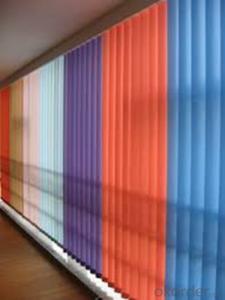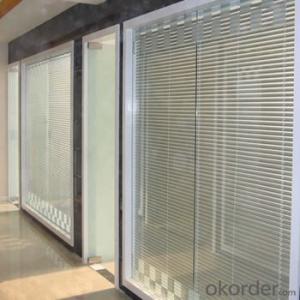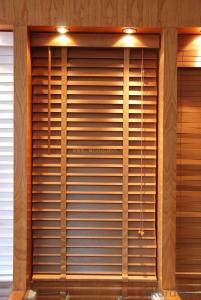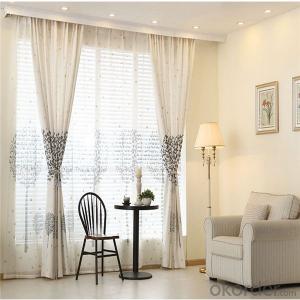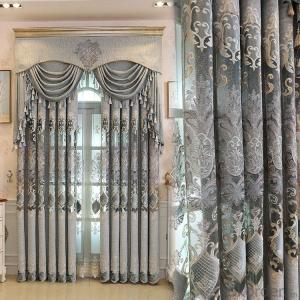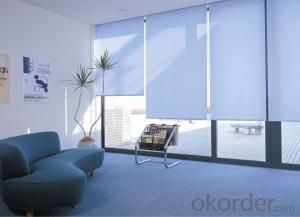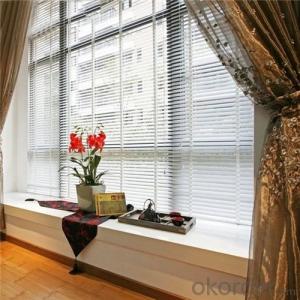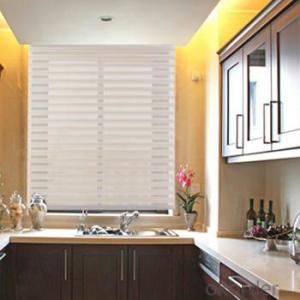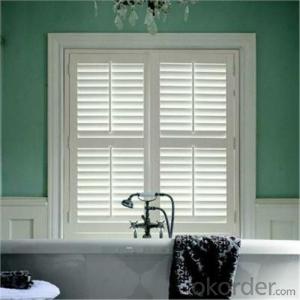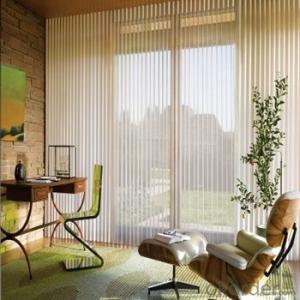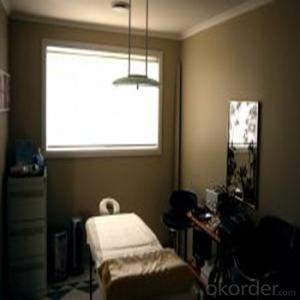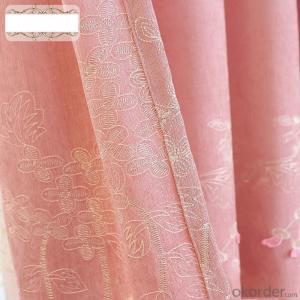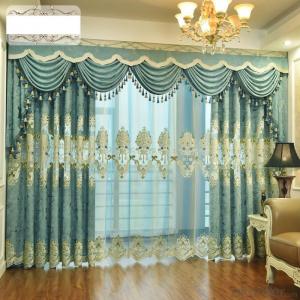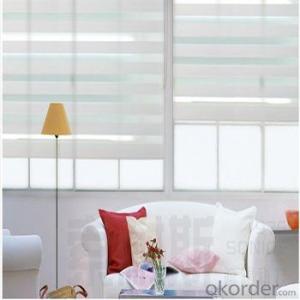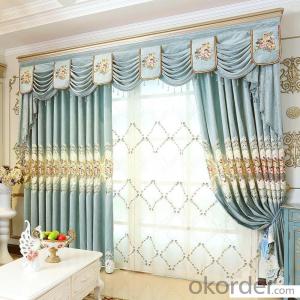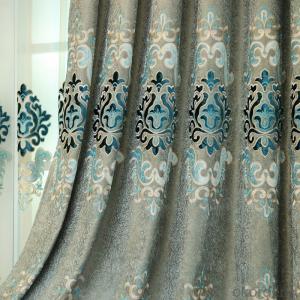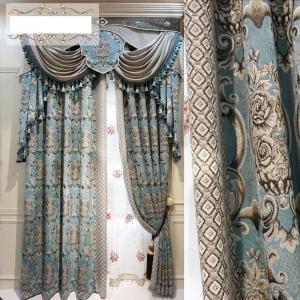Inerior Decoration Shangri-la Waterproof Shower Blinds / Curtains Fabrics Modern
- Loading Port:
- Ningbo
- Payment Terms:
- TT OR LC
- Min Order Qty:
- 1 m
- Supply Capability:
- 10000 m/month
OKorder Service Pledge
OKorder Financial Service
You Might Also Like
Specification
Specification:
| Composition: | 100% Polyester,pvc coating,aluminum system,plastic components |
| Width: | 1.50M-3.00M |
| Colour: | All colours are available |
| Packing: | 1pcs in one pvc box,8pvc boxes in one carton. |
| MOQ: | 100Sets/Color |
| Delivery: | 30days after deposit arrive |
| Color Fastness: | >5 Grade |
| Weight: | 200gsm-400gsm |
| Curling: | None |
Product despcription
Product | Home decor latest design motorized vertical blinds |
Material | 100% Polyester |
The weight | 210-220gsm |
The width | 7000px( normally 250-7500px) |
The height of Mesh | 55-1500px ( normally 50-1875px) |
Color | Various Color For Choice Or According To Buyers' Requirements |
Tear strength | warp59(N) |
Antibacterium | Proportion of bacterium reduction 99.00% |
Shrinkage | Width-2% Wet cleaning1%Dry cleaning Height-2%Wet cleaning0%Dry cleaning |
Washing | Decoration class 4-5 Dirtiness class 5 |
Attrition | Class 5 under dry condition Class 5 under wet condition |
Advantage
1. Made in NingBo..
2. Comfortable to touch and beautifully look.
3.Recyclable, decomposable, no noxious gas when incinerating
4. No Formaldehyde, No Azo-dye. It will not cause allergy nor noxious.
5. Stays long under normal condition.
Features:
1. The Ceiling Mounted Hospital Curtains Systems are widely used in the hospitals.
2. Being Ventilated: On the top of the Ward Curtains, there are reticular and oval holes for ventilation. Air or winds can go through this part to keep a good ventilation environment.
3. Being Neat: Ward Curtains used in Normal Wards, Intensive Care Units, Injection Rooms, Body Examine Room, etc. to make the palce orderly and neat.
4. Keep Privacy: The patients, the visitors in the same wards or rooms to keep their privacy by the Ward Curtains
5. Saving Space: Ward Curtains system is ceiling mounted, Can be fold-able. Needn’t any additional space.
6. Being Convenient to install: the Wards Curtains System tracks can be installed easily, and the curtains can be offload; easy to clean.
7.Fireproofness: Compliant with GB17591-1998 standard Both fireproofing and non-fireproofing medical separating curtain cloth is available.
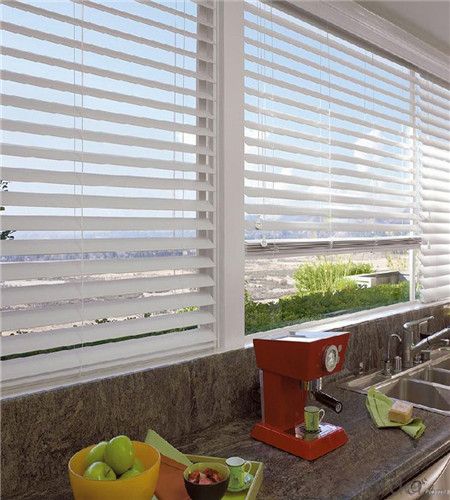
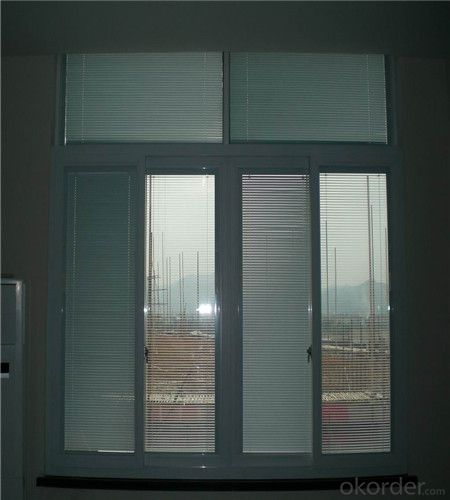
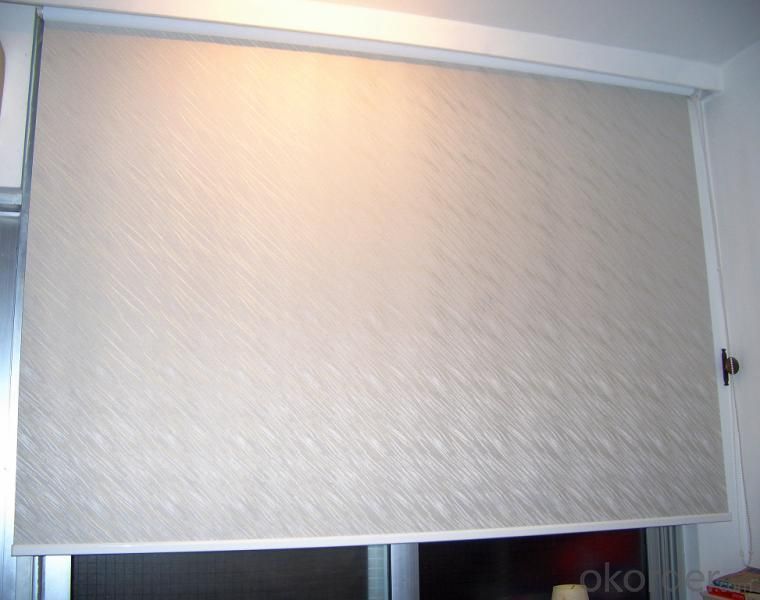
- Q: How do I choose the right curtain accessories?
- Choosing the right curtain accessories involves considering factors such as the style and design of your curtains, the functionality you desire, and the overall aesthetic of your space. Start by determining the purpose of your curtains and whether you need accessories like tiebacks, curtain rods, or valances. Consider the material, color, and pattern of your curtains to ensure the accessories complement them. Additionally, take measurements to ensure the accessories fit properly. Lastly, assess your personal style and preferences to select accessories that enhance the overall look and feel of your room.
- Q: What are the best curtain options for a coastal chic decor style?
- When it comes to selecting curtains for a coastal chic decor style, there exist numerous choices that effortlessly complement this aesthetic. Here are several exceptional curtain options to achieve a coastal chic appearance: 1. Sheer White Curtains: Opt for lightweight sheer white curtains to establish a breezy and airy ambiance. These curtains permit natural light to filter through while providing a feeling of privacy. They contribute an element of elegance and simplicity to your coastal decor. 2. Natural Fabrics: Consider curtains crafted from natural materials such as linen or cotton. These fabrics possess a relaxed and organic sensation that harmonizes flawlessly with a coastal chic style. Seek out curtains in soft, neutral hues like beige, sand, or light gray to enhance the coastal ambiance. 3. Nautical Patterns: Introduce curtains featuring nautical-inspired patterns to amplify the coastal theme. Stripes, anchors, or sailboat motifs can add a playful element to your decor. Opt for curtains in shades of blue or navy to evoke a sense of the ocean. 4. Bamboo or Woven Blinds: To achieve a more rustic coastal appearance, contemplate bamboo or woven blinds. These window treatments provide texture and warmth to your space, infusing a natural component into your decor. Moreover, they offer privacy while still permitting some light to filter through. 5. Coastal Colors: Select curtains in hues that mirror the coastal palette. Delicate blues, seafoam greens, sandy beiges, and coral tones can all harmonize beautifully with a coastal chic decor style. These colors will evoke feelings of tranquility and serenity. Remember, the key to attaining a coastal chic decor style lies in maintaining an ambiance that is light, breezy, and inspired by the beach. By selecting curtains that align with these principles, you can construct a coastal sanctuary within your home.
- Q: Can curtains be used to enhance the visual width of a narrow room?
- Yes, curtains can be used to enhance the visual width of a narrow room. By selecting the right curtain design, color, and length, you can create an optical illusion that makes the room appear wider. Here are a few ways curtains can help achieve this effect: 1. Choose the right color: Opt for light-colored curtains that reflect natural light. Light colors like white, cream, or pastel shades can make a room feel more open and spacious. 2. Hang curtains wider than the window: By extending the curtain rod beyond the window frame, you can create the illusion of a wider window and room. This allows more natural light to enter the room, making it feel bigger. 3. Use sheer curtains: Sheer curtains are translucent and allow light to pass through, creating a sense of airiness. By using sheer curtains, you can maximize the natural light in the room, making it feel more open and less confined. 4. Choose floor-to-ceiling curtains: Hanging curtains from ceiling to floor can visually extend the height of the room, which in turn can make it appear wider. This design trick draws the eye upward and avoids breaking up the wall space, creating a more expansive feel. 5. Avoid heavy patterns or bold prints: Opt for solid colors or subtle patterns to prevent overwhelming the space. Heavy patterns or bold prints can make a narrow room feel cramped and cluttered, so it's best to keep it simple and clean. Remember, curtains alone cannot magically make a room wider, but they can certainly enhance the visual width by using specific design techniques to create the illusion of a more spacious and open environment.
- Q: Can curtains be used to add a pop of color to a neutral room?
- Yes, curtains can definitely be used to add a pop of color to a neutral room. In fact, curtains are a great way to inject color into a space without overwhelming it. By selecting curtains in a vibrant or bold color, you can instantly transform the overall look and feel of a neutral room. Whether it's a bright blue, a rich red, or a sunny yellow, colorful curtains can create a focal point and bring life to an otherwise subdued space. Additionally, curtains provide versatility as they can be easily switched out or replaced if you ever want to change up the color scheme in the room. So, if you want to infuse some personality and vibrancy into your neutral room, curtains are a wonderful choice to achieve that pop of color.
- Q: How do I hang curtains on a sports arena or stadium?
- To hang curtains on a sports arena or stadium, you will need a few key steps. First, determine the type of curtains you want to use and their specific measurements. Next, ensure you have the necessary hardware and equipment like curtain rods, brackets, and hooks that are appropriate for the venue's structure. Once you have all the materials, carefully measure and mark the positions where the curtains should be installed. Then, securely mount the curtain rods or tracks onto the walls or ceilings using the appropriate hardware. Finally, attach the curtains to the rods or tracks, ensuring they are evenly distributed and properly draped. It may be helpful to consult with a professional or the venue's management for specific guidelines or recommendations.
- Q: Can curtains be used to create a cozy atmosphere in a living room?
- Certainly, the utilization of curtains in a living room can unquestionably establish a pleasant ambiance. Curtains possess the capacity to alleviate the harshness of natural light and generate a warm and welcoming atmosphere. By selecting suitable fabric, color, and texture, curtains can contribute to a feeling of opulence and coziness in any living area. Moreover, they can ensure privacy, diminish noise, and assist in maintaining the room's temperature. Furthermore, curtains can be combined with other window treatments, such as sheer curtains or blinds, to further enrich the cozy atmosphere and create a versatile and fashionable appearance. Overall, curtains offer an excellent approach to infuse warmth, comfort, and a touch of sophistication into any living room, thus transforming it into a cozy and tranquil space for everyone's enjoyment.
- Q: How do I clean thermal curtains?
- To clean thermal curtains, start by checking the manufacturer's instructions for specific cleaning guidelines. In most cases, you can either machine wash or hand wash them using a gentle cycle with cold water and mild detergent. Avoid using bleach or harsh chemicals. After washing, hang them to dry or use a low heat setting in the dryer. Remember to remove any hooks or hardware before cleaning.
- Q: Can I use curtains to add a touch of whimsy to a room with a formal look?
- Yes, you can definitely use curtains to add a touch of whimsy to a room with a formal look. Curtains are a versatile and impactful element in interior design that can instantly change the atmosphere of a space. To achieve a whimsical touch, consider opting for curtains with playful patterns or vibrant colors. Sheer curtains with delicate floral prints or curtains featuring whimsical motifs like birds or butterflies can bring a sense of lightness and charm to a formal room. Additionally, you can also play with the curtain length and style to create a more whimsical effect. Choosing curtains with a scalloped or ruffled edge, or adding decorative details such as tassels or pom-poms, can further enhance the whimsical vibe. By carefully selecting the right curtains and incorporating them into the overall design scheme, you can successfully blend formal and whimsical elements, resulting in a unique and visually appealing room.
- Q: How do I hang curtains on a sliding glass door?
- To hang curtains on a sliding glass door, you can start by measuring the width and length of the door to determine the appropriate curtain size. Next, install a curtain rod above the door frame, ensuring it is level and secure. If the door has a track, you can use curtain track gliders or hooks to hang the curtains directly from the track. Alternatively, for doors without a track, you can use curtain rod brackets to attach the rod to the wall above the door. Once the rod is in place, simply hang the curtains onto the rod and adjust them as needed.
- Q: Can curtains be used to create a cozy atmosphere in a living room?
- Yes, curtains can definitely be used to create a cozy atmosphere in a living room. Curtains have the ability to soften the harshness of natural light and create a warm and inviting ambiance. By choosing the right fabric, color, and texture, curtains can add a sense of luxury and comfort to any living space. They can also provide privacy, reduce noise, and help regulate the temperature in the room. Additionally, curtains can be layered with other window treatments, such as sheer curtains or blinds, to further enhance the cozy atmosphere and create a versatile and stylish look. Overall, curtains are a great way to add warmth, comfort, and a touch of elegance to any living room, making it a cozy and relaxing space for everyone to enjoy.
Send your message to us
Inerior Decoration Shangri-la Waterproof Shower Blinds / Curtains Fabrics Modern
- Loading Port:
- Ningbo
- Payment Terms:
- TT OR LC
- Min Order Qty:
- 1 m
- Supply Capability:
- 10000 m/month
OKorder Service Pledge
OKorder Financial Service
Similar products
Hot products
Hot Searches
Related keywords
